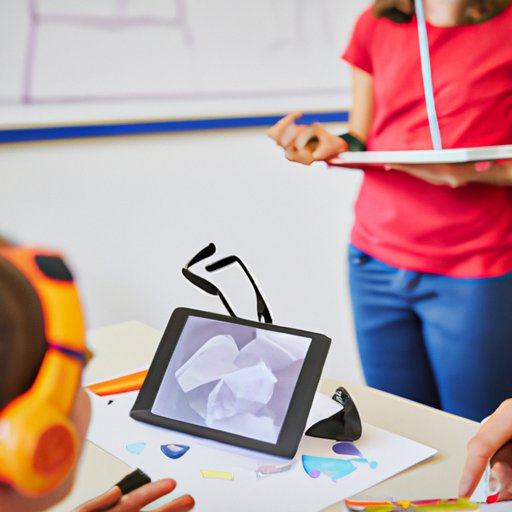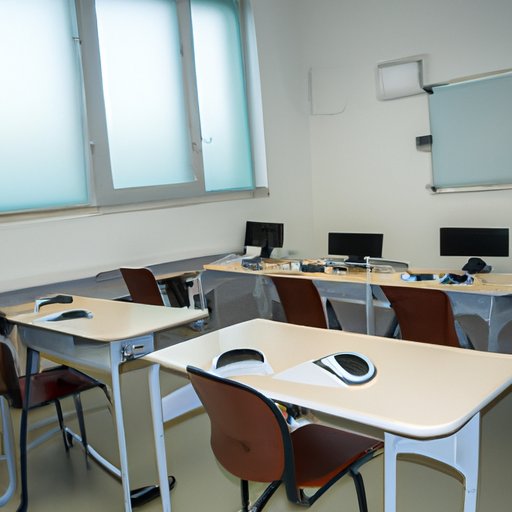Introduction
The 21st century classroom is drastically different from what it used to be. With the advancement of technology, teachers now have access to a variety of tools and resources that can help them engage their students, create interactive learning experiences, and improve student outcomes. However, with so many options available, it can be difficult to decide which technology is best suited for the classroom.
In this article, we’ll explore the latest classroom technologies and discuss the benefits and challenges of integrating technology in the classroom. We’ll also examine five must-have technologies for 21st century classrooms and explore the use of augmented reality in the classroom. Finally, we’ll provide tips on how to choose the right technology for your classroom.
Top 5 Must-Have Technologies for 21st Century Classrooms
When it comes to choosing the right technology for the classroom, there are a few must-haves that every teacher should consider. Here are five of the most popular and effective technologies for the 21st century classroom:
- Augmented Reality
- Learning Management Systems
- Interactive Whiteboards
- Virtual Reality
- Mobile Devices

Exploring the Use of Augmented Reality in the Classroom
Augmented reality (AR) is a technology that overlays digital content onto the physical world. AR has become increasingly popular in the classroom, as it allows teachers to create engaging and immersive learning experiences. From interactive 3D models to virtual field trips, AR can be used to enhance traditional teaching methods and make lessons come alive.
There are a variety of AR applications available, ranging from educational games to virtual laboratories. These applications can be used to teach a variety of topics, from math and science to history and literature. AR can also be used to supplement existing lessons, providing students with an interactive and visual way to learn.
In addition to enhanced learning experiences, AR also offers a number of other benefits. For example, AR can provide students with real-time feedback, allowing them to identify and address areas of improvement quickly. Furthermore, AR can be used to assess student performance and provide personalized instruction.
How to Choose the Right Technology for Your Classroom
When choosing the right technology for your classroom, there are a few important considerations to keep in mind. First, it’s important to think about the age and ability level of your students. Different technologies may be better suited for different age groups and skill levels. Secondly, consider the learning objectives you want to achieve with the technology. Different technologies may be better suited for different types of learning activities.
Finally, it’s important to consider the budget and resources available. Different technologies require different levels of investment, so it’s important to find a balance between cost and effectiveness. Additionally, some technologies may require additional training or support, so it’s important to factor this into the decision-making process.
Once you’ve identified the technology that best suits your needs, it’s time to think about implementation. Here are a few tips for successfully implementing technology in the classroom:
- Start small – introduce one technology at a time and allow students to become familiar with it before introducing another.
- Provide training and support – ensure students and faculty are comfortable using the technology before introducing it into the classroom.
- Be flexible – allow students to explore and experiment with the technology, and be open to adapting the lesson plan if necessary.
- Monitor progress – regularly assess student progress and adjust the lesson plan accordingly.
Conclusion
Technology has become an integral part of the 21st century classroom, and there are a variety of tools and resources available to teachers. The five must-have technologies for 21st century classrooms include augmented reality, learning management systems, interactive whiteboards, virtual reality, and mobile devices. When choosing the right technology for your classroom, it’s important to consider the age and ability level of your students, the learning objectives you want to achieve, and the budget and resources available. Finally, it’s important to provide training and support and monitor student progress to ensure successful implementation.
With the right technology, teachers can create engaging and interactive learning experiences that will help students reach their full potential. By exploring the latest classroom technologies and understanding the benefits and challenges of integrating technology in the classroom, teachers can ensure they are making the most of their resources and providing their students with a quality education.
(Note: Is this article not meeting your expectations? Do you have knowledge or insights to share? Unlock new opportunities and expand your reach by joining our authors team. Click Registration to join us and share your expertise with our readers.)
